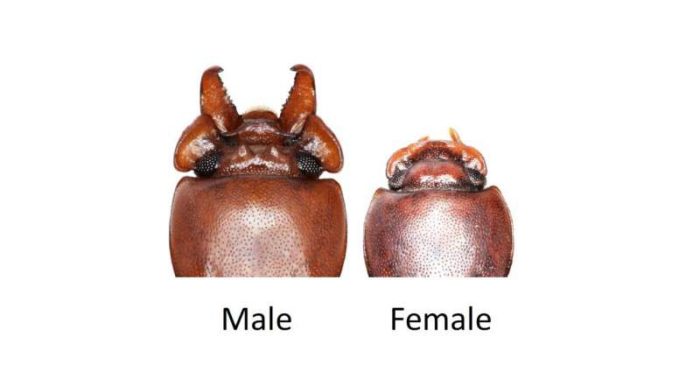Jun 08 2021
Evolutionary Compromises
 Evolution if one of the most fascinating scientific phenomena because it is so complex and operates over such varying and long timescales. It’s a real challenge to wrap one’s head around. There is therefore a tendency to settle on overly simplistic evolutionary narratives. This is not a criticism, we all do this in an attempt to grapple with evolutionary thinking. The challenge is to recognize this fact, and be open to a deeper, more complex and nuanced understanding of evolutionary processes. It’s a great example of what should be a general intellectual posture – recognize the limits of our current understanding (wherever that may be on the spectrum) and not only be open to, but seek out new information and concepts to keep incrementally pushing our understanding forward.
Evolution if one of the most fascinating scientific phenomena because it is so complex and operates over such varying and long timescales. It’s a real challenge to wrap one’s head around. There is therefore a tendency to settle on overly simplistic evolutionary narratives. This is not a criticism, we all do this in an attempt to grapple with evolutionary thinking. The challenge is to recognize this fact, and be open to a deeper, more complex and nuanced understanding of evolutionary processes. It’s a great example of what should be a general intellectual posture – recognize the limits of our current understanding (wherever that may be on the spectrum) and not only be open to, but seek out new information and concepts to keep incrementally pushing our understanding forward.
In that spirit, here is a study on the evolution of broad-horned flour-beetles that illustrates some of evolution’s complexity. The male broad-horned has exaggeratedly large mandibles, which is uses to compete with other males for mating access to females. This is an example of sexual selection, when a feature specifically increases mating success but is not necessarily broadly adaptable. The go-to example of this is the peacock’s tail feathers – a garish display meant to attract females, but an evolutionary burden in many other aspects. This sets up an evolutionary tug-of-war, where a feature may be advantageous in one respect but disadvantageous in another. Evolutionary processes are fairly efficient at balancing such conflicting forces.
As an aside, the balances tend to be only metastable. They can alter with changes in the environment or behavior. Even different individuals within a species can adopt different survival strategies that result in a different balance of traits. If a population within a species does this it may even eventually lead to a speciation event. For example, it has been documented that within some primate species dominant males will have access to females due to their alpha status, while others gain access by currying favor with the alpha, and still others gain access by gaining favor with the females and sneaking behind the alpha’s back. Still others may act as a “wing man” to a close kin, promoting their genes into the next generation by proxy. The lesson here is – no one strategy captures the wide diversity of behavior even within a single species.

 A few years ago I was sued for libel, in a case I ultimately won in summary judgement where the other side had to pay for some of my legal costs because the judge deemed it unreasonable. But the case did proceed to discovery, which means each side gets to request information from the other. This included me turning over something like 40,000 e-mails. Search tools allow for sifting through these e-mails to find those that may be relevant. And of course, the other side was able to find e-mails that they could twist to create the impression of something sinister. Fortunately, in a court of law, there are rules of evidence and logic, and there was time to dig down to see if the e-mails in fact were evidence of anything. They weren’t.
A few years ago I was sued for libel, in a case I ultimately won in summary judgement where the other side had to pay for some of my legal costs because the judge deemed it unreasonable. But the case did proceed to discovery, which means each side gets to request information from the other. This included me turning over something like 40,000 e-mails. Search tools allow for sifting through these e-mails to find those that may be relevant. And of course, the other side was able to find e-mails that they could twist to create the impression of something sinister. Fortunately, in a court of law, there are rules of evidence and logic, and there was time to dig down to see if the e-mails in fact were evidence of anything. They weren’t. Douglas Adams had a talent for irony. In the Hitchhiker’s Guide series he told the tale of a civilization that tried to improve itself by tricking everyone with a useless job into taking a rocket trip to another world (actually to nowhere). For example, one of the discarded people’s jobs was to clean phones. That’s it – they were a phone cleaner. That civilization later collapsed due to a pandemic started by a phone virus.
Douglas Adams had a talent for irony. In the Hitchhiker’s Guide series he told the tale of a civilization that tried to improve itself by tricking everyone with a useless job into taking a rocket trip to another world (actually to nowhere). For example, one of the discarded people’s jobs was to clean phones. That’s it – they were a phone cleaner. That civilization later collapsed due to a pandemic started by a phone virus. Remember the bird flu?
Remember the bird flu?  Damn, I hope this one is true. Battery technology is absolutely key to our energy strategy going forward. Right now the cutting edge is lithium ion batteries, which are great, and good enough for our current purposes. They allow for cars with a range of about 350 miles, which is more than enough for most purposes. They are barely, however, energy dense and cost-effective enough to use for home backup power. This is still an expensive option, out of reach for most people. They are fine for small technology, like laptops and cellphones.
Damn, I hope this one is true. Battery technology is absolutely key to our energy strategy going forward. Right now the cutting edge is lithium ion batteries, which are great, and good enough for our current purposes. They allow for cars with a range of about 350 miles, which is more than enough for most purposes. They are barely, however, energy dense and cost-effective enough to use for home backup power. This is still an expensive option, out of reach for most people. They are fine for small technology, like laptops and cellphones. Scientists have published the
Scientists have published the
 There have been many studies coming out recently looking at what it would take to mitigate climate change, and some patterns emerge from these analyses. First it is important to note that a certain amount of climate change has already happened,
There have been many studies coming out recently looking at what it would take to mitigate climate change, and some patterns emerge from these analyses. First it is important to note that a certain amount of climate change has already happened, 
 Imagine having an extra arm, or an extra thumb on one hand, or even a tail, and imagine that it felt like a natural part of your body and you could control it easily and dexterously. How plausible is this type of robotic augmentation? Could “Doc Oc” really exist?
Imagine having an extra arm, or an extra thumb on one hand, or even a tail, and imagine that it felt like a natural part of your body and you could control it easily and dexterously. How plausible is this type of robotic augmentation? Could “Doc Oc” really exist?




